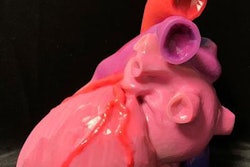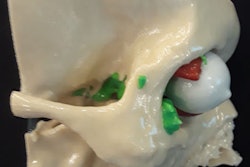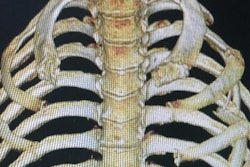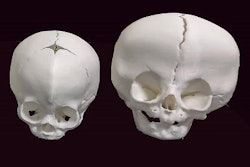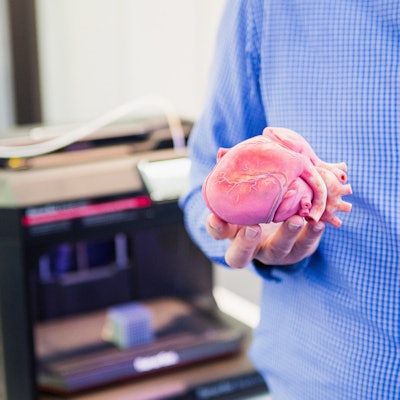
Clinicians, including radiologists, who attended a 3D printing course unanimously agreed that the technology has the potential to benefit the management of cardiovascular disease; nearly all expressed an interest in learning more, according to an article published May 20 in the International Journal of Artificial Organs.
The researchers, led by Giovanni Biglino, PhD, from the University of Bristol in the U.K., hosted a 1.5-hour 3D printing training session at the 2018 Society for Cardiovascular Magnetic Resonance (SCMR) and EuroCMR joint meeting in Barcelona, Spain, for an audience that included radiologists, cardiologists, technologists, physicists, and bioengineers.
The course provided an overview of medical 3D printing, as well as details regarding the full 3D printing workflow, current software and technology options, and predominating cardiovascular applications. The lecturers also presented a wide range of 3D-printed heart models based on MRI or CT scans while discussing several case studies.
"I think heart models can really provide insight for both the clinical team and for patients (and their families), so they are very versatile tools," Biglino told AuntMinnie.com. "They can be complemented by other types of 3D technologies, such as virtual reality, but the possibility of holding a model is unique."
Following the session, 28 attendees completed a survey regarding their interest in medical 3D printing and their preferences for future education and training opportunities associated with the topic.
Biglino and colleagues found that 39% of attendees already had experience with medical 3D printing and that 79% were interested in additional training. Roughly 80% of the participants rated the 3D printing course as very or extremely useful, and about 30% hoped for longer training sessions that included live demonstrations.
Furthermore, all of the participants concurred that 3D printing had the potential to facilitate decision-making concerning some aspect of cardiovascular care -- whether it be communicating with patients, training staff, or planning surgical or interventional procedures. However, around 30% of the participants expressed concerns over limited access to 3D printing technology or time constraints when using it.
Most of the participants also confirmed that their individual facilities already had an in-house 3D printing center or felt that it would be advantageous to have one. Only 8% claimed to prefer relying on an external third party for 3D printing services.
The survey responses revealed the need for additional 3D printing courses offering a more generalized introduction to the technology for those who have no prior experience with it, followed by a more in-depth and hands-on session, the authors noted.
"While we work toward gathering evidence as to the usefulness of 3D-printed models in different domains, from surgical planning to counseling and communication, these research findings will be important in backing up the enthusiasm for the technology and supporting clinical implementation," Biglino added.
The group delivered a similar training course at the recent 2019 EuroCMR meeting in Venice, Italy, and have another one planned for the upcoming 3D Printing in Medicine course in Leuven, Belgium. Biglino and colleagues are also preparing a series of courses on 3D printing in cardiovascular medicine at the University of Bristol.
"I feel there is a strong interest in the technology and, given the technical advances in recent years, the technology itself has become more accessible," he said. "It still requires, nevertheless, close collaboration between bioengineers and clinicians."




